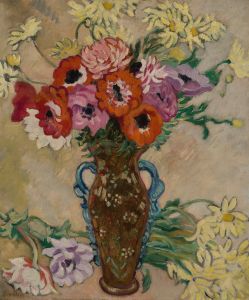
The wreath winder
A hand-painted replica of Ferdinand Georg Waldmüller’s masterpiece The wreath winder, meticulously crafted by professional artists to capture the true essence of the original. Each piece is created with museum-quality canvas and rare mineral pigments, carefully painted by experienced artists with delicate brushstrokes and rich, layered colors to perfectly recreate the texture of the original artwork. Unlike machine-printed reproductions, this hand-painted version brings the painting to life, infused with the artist’s emotions and skill in every stroke. Whether for personal collection or home decoration, it instantly elevates the artistic atmosphere of any space.
Ferdinand Georg Waldmüller was an Austrian painter renowned for his contribution to the Biedermeier period, a time characterized by a focus on realism and detail in art. One of his notable works is "The Wreath Winder," which exemplifies his skill in capturing everyday life with meticulous attention to detail and vibrant colors.
"The Wreath Winder" is a genre painting, a style that Waldmüller excelled in, depicting scenes from everyday life. This painting showcases a young woman engaged in the task of winding a wreath, an activity that was common in rural settings and often associated with various cultural and religious traditions. Waldmüller's ability to portray such scenes with authenticity and warmth made his work particularly appealing to the middle-class audience of his time.
In this painting, Waldmüller employs a naturalistic approach, a hallmark of his style, to bring out the textures and colors of the scene. The young woman is depicted with a serene expression, absorbed in her task, which adds a sense of tranquility and focus to the composition. The attention to detail is evident in the depiction of the foliage and flowers, which are rendered with precision, highlighting Waldmüller's keen observation skills and his dedication to realism.
The setting of "The Wreath Winder" is typical of Waldmüller's work, often featuring idyllic rural landscapes that reflect the beauty of the Austrian countryside. The use of light in the painting is particularly noteworthy; Waldmüller was adept at capturing the effects of natural light, which adds depth and dimension to his compositions. In this painting, the interplay of light and shadow enhances the three-dimensionality of the scene and draws the viewer's eye to the central figure.
Waldmüller's work, including "The Wreath Winder," is often celebrated for its ability to convey the simplicity and beauty of everyday life. His paintings are characterized by a sense of harmony and balance, achieved through careful composition and the use of color. This approach not only reflects the aesthetic values of the Biedermeier period but also Waldmüller's personal artistic philosophy, which emphasized the importance of truthfulness and sincerity in art.
Throughout his career, Waldmüller faced various challenges, including shifts in artistic trends and personal hardships. However, his dedication to his craft and his ability to adapt to changing circumstances ensured his lasting legacy in the art world. Today, his works are appreciated for their historical significance and their contribution to the development of 19th-century European art.
"The Wreath Winder" remains a testament to Waldmüller's skill as a painter and his ability to capture the essence of his subjects with clarity and empathy. His work continues to be studied and admired for its technical excellence and its reflection of the cultural and social milieu of his time.


















